SOME NATURAL PHENOMENA for Class 8 SCIENCE
INTRODUCTION
Hamare chapter ka name hai “Some natural phenomena”, toh iss chapter mein hum kuchh natural phenomena jaise lightning aur earthquakes ke baare mein discuss karenge. Isme hum electric charges ke baare mein janege, unke interaction ke baare mein janege, unki story ke baare mein janege aur janege ki unse apni safety kis tarah rakhi jaye. Yaha hum earthquake ke baare mein bhi janege ki earthquake kya hota hai, kaise occur hota hai aur isse kaise khud ko protect kiya ja sakta hai. Ab hum inn sabhi baato ke baare mein detail mein janege.
Lightning
Lightning ek electric discharge ya electric spark hota hai jo nature mein major scale par hota hai. Yeh charge ke clouds mein accumulation ki wajah se hota hai.
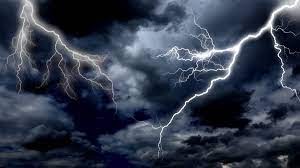
Normally bhi hum electric poles par, loose socket, etc. mein sparks dekhte hai. Lightning bhi huge scale par issi tarah ka ek spark hai. Yeh sparks bahut dangerous bhi prove ho sakti hai aur life aur property ko harm kar sakti hai.
Ancient times mein logo ko inn sparks ka cause pata nahi hota tha aur woh isse bahut darte the lekin ab scientists ne iss natural phenomenon se bachne ke liye aur khud ko protect karne ke liye bahut saare precautions evolve kar liye hai.
The Sparks that the Greeks Knew About
Ancient greeks 600 B.C. se hi charges ke baare mein aware the. Woh jante the ki jab amber (amber ek tarah ka resin hota hai) aur fur ko ek doosre ke sath rub kiya jata hai toh yeh charge ho jata hai aur light objects jaise hairs, etc. ko attract karta hai. Jab bhi hum koi woollen ya polyester clothes wear karte hai toh woh bhi hairs ko attract karte hai aur jab hum apni body se woh clothes take off karte hai toh woh ek crackling sound aur little sparking produce karte hai. Benjamin Franklin ek american scientist the jinhone yeh prove kiya ki lightning aur hamare clothes mein jo spark hoti hai dono same phenomenon hai.Ab hum electric charges ke baare mein janege.
What are Electric charges?
Electric Charge is nothing but the amount of energy or electrons that pass from one body to another by different modes like conduction, induction or other specific methods. There are two types of electric charges. They are positive charges and negative charges.Hamne yeh toh jaan liya ki electric charges kya hote hai, ab hum janege ki rub karke electric charge kaise generate hota hai.
Charging by Rubbing
Jab bhi hum kisi do objects ko rub karte hai toh electrons ke transfer ki wajah se woh kuchh charge acquire kar lete hai aur jo objects charge acquire kar lete hai unko hum charged objects kehte hai. Eg- Agar hum comb ko dry hairs par rub karte hai toh woh comb kuchh charge acquire kar leti hai.
Types of Charges and Their Interaction
Charges do type ke hote hai- Positive aur negative charge. Jab bhi hum kisi do objects ko rub karte hai toh ek object ke paas jyada electrons carry karta hai aur doosra object jyada electrons carry karta hai. Jis object ke paas jyada electrons hote hai woh negatively charged hota hai aur jis object ke paas less electrons hote hai woh positively charged hota hai. Jab ek object ke paas jyada charge hota hai aur ek object ke paas less charge hota hai toh woh ek doosre ko attract karte hai, lekin agar dono excessively charged bodies ek-doosre ke contact mein aati hai toh woh ek doosre ko repel karti hai. Iska matlab hai ki same charges ek doosre ko repel karte hai aur different charges ek-doosre ko attract karte hai. Eg- Ek charged balloon doosre charged balloon ko repel karta hai, ek charged refill doosre charged refill ko repel karta hai lekin ek charged balloon ek charged refill ko attract karta hai.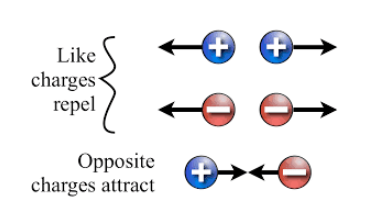
Jab hum glass rod ko silk cloth ke sath rub karte hai toh woh bhi positive charge acquire kar leti hai aur jab is glass rod ko ek aise plastic straw ke contact mein laya jata hai jisko hamne polythene par rub kiya ho toh yeh dono bhi ek doosre ko attract karte hai.
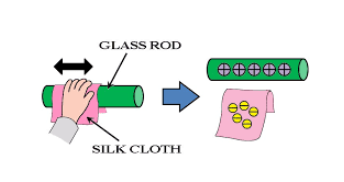
Electric charges bhi do tarah ke hote hai- kuchh charges aise hote hai jo khud se move nahi kar paate, aise charges ko hum static charges kehte hai. Static charge rubbing se generate kiya ja sakta hai.
Aise charges jo move kar sakte hai woh electric current produce karte hai. Jab charges ek point se doosre point par move karte hai toh electric current generate hota hai.
Lekin yeh charge ek jagah se doosri jagah transfer kaise hote hai? Isko janne ke liye hum next topic study karenge.
Transfer of Charge
Charges ek charged object se doosre charged object par metal conductor ke through transfer hote hai.
Ek aisa device jo charge ke presence ko detect karta hai usko electroscope kehte hai.
Ek charged body se charges ko remove karne ke process ko discharging kehte hai.
Ek aisa process jisme charges charged object se earth par transfer ho jate hai usko earthing kehte hai. Buildings mein earthing provided hoti hai taki hum electrical current ki leakage ki wajah se lagne wale kisi bhi shock se bach sake.
The Story of Lightning
During a thunderstorm, the hot air moves upwards while the raindrops fall downloads. This leads to a separation of charges in the atmosphere. As a result, negative charges get accumulated in the lower ages of the clouds while positive charges accumulate at the upper edges. The ground is accumulated with a positive charge all over. These charges begin to multiply due to the increase in winds and rainfall. Although the air is a poor conductor of electricity due to heavy charges it is unable to restrict the electric flow after some time. The negative charges and positive charges meet which results in the production of electric sparks in the form of a streak of light accompanied by a sound. The streak is called lightning and the whole phenomenon is called electric discharge. This electric discharge can occur between two or more clouds or between clouds and the earth.Lightning streak of charges ki tarah occur karti hai jo ground ki taraf fall karti hai. Tall buildings aur tall trees charge ko easily ground ki taraf conduct kar dete hai. Inn tall buildings aur lightning ke beech mein air gap bhi bahut less hota hai isliye inn par lightning easily strike kar pati hai.
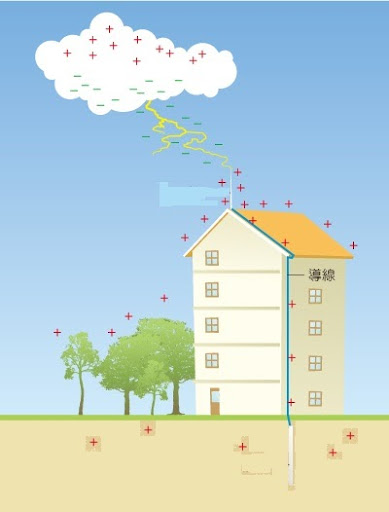
Lightning Safety
Lightning ke time par hamein kuchh precautions lene chahiye. Iss time par hamein kuchh baaton ka khaas dhyan rakhna chahiye. Iss time par koi bhi open place safe nahi hota isliye thunder ki sound sunte hi hamein ek safe place jaise koi house ya building find karke waha rukna chahiye. Agar aap bus ya car mein hai toh apko windows aur door shut karke andar hi rukna chahiye. Hamein tab tak inn safe places mein hi rehna chahiye jab tak storm stop na ho jaye.
Do’s and Don’ts during a Thunderstorm
OutsideLightning Conductors
Buildings ko lightning ke effect se bachane ke liye jo device use kiya jata hai usko lightning conductor kehte hai. Jab bhi kisi building ko construct kiya jata hai toh uski walls mein building ki height se bhi jyada badi metallic rods lagai jati hai. Iss rod ka ek end air mein hota hai aur doosra end deep down ground mein buried hota hai. Iss rod ki help se sara electric charge easily ground mein transfer ho jata hai.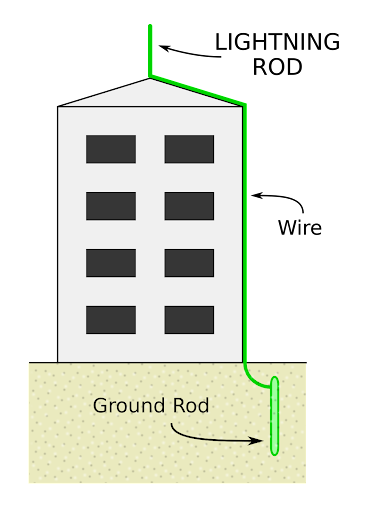
Earthquakes
Earthquake ek natural phenomenon hai jo earth ke surface ko shake kar deta hai. Yeh human life aur property ko ek huge scale par damage kar sakta hai. Baki natural calamities jaise cyclones, thunderstorms, etc. ko toh meteorologists predict kar sakte hai lekin earthquake ek aisa natural phenomenon hai jisko hum abhi bhi accurately predict nahi kar sakte.
What is an Earthquake?
Earthquake earth ki ek sudden shaking ya trembling hoti hai jo ek bahut short time ke liye hoti hai . Yeh earth crust mein disturbances ki wajah se occur hota hai. Earth surface ke andar yeh earthquakes hamesha hote rehte hai lekin yeh itne minor hote hai ki notice nahi ho pate. Sometimes yeh major hote hai toh destruction cause karte hai. Lekin major earthquakes bahut rare hote hai.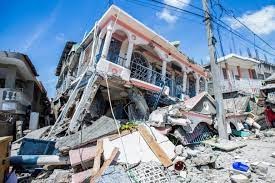
India mein ek major earthquake 8 october, 2005 ko north kashmir ke Uri aur Tangdhar towns mein aya tha. Isse bhi pehle ek earthquake 26 january, 2001 ko Gujarat ki Bhuj district mein aya tha.
Earthquakes ki wajah se floods, landslides aur tsunamis bhi aa sakti hai. India mein 26 december, 2004 ko ek major tsunami aya tha, ocean ke around sabhi coastal areas mein huge losses huve the.
What Causes an Earthquake?
Earth ka surface several layers mein divided hai- crust, mantle, inner core and outer core.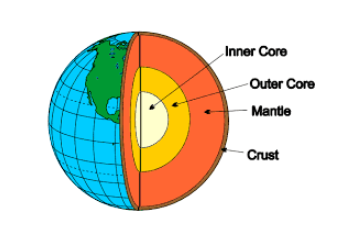
Earthquake uppermost layer earth crust mein hone wali disturbances ki wajah se occur karta hai. Earth ki yeh outermost layer several fragments mein divided hoti hai jisko hum plates bhi kehte hai aur yeh plates hamesha move karti rehti hai. Jab yeh plates move karti hai toh aapas mein collide bhi karti hai jiski wajah se earth crust mein disturbances create hoti hai. Inn disturbances ko hi hum earthquake kehte hai.
Mostly earthquakes earth ki plates ki movement ki wajah se hi hoti hai lekin earthquake ke iske alawa aur bhi reasons ho sakte hai jaise ki- volcanic eruptions, when a meteor hits the earth’s surface, nuclear explosions under earth’s surface, etc.
Earthquakes plates ki movement ki wajah se hote hai, yeh mostly plates ki boundary par hote hai kyonki yeh plates ka weak zone hoti hai. Inn weak zones ko hum seismic or fault zones bhi kehte hai. India ke mostly threatened areas Kashmir, western aur central himalayas, whole of north-east, rann of kutch, rajasthan aur indo-gangetic plane hai.
Earthquake ko hum magnitude ki form mein ek scale par represent karte hai jisko hum Richter scale kehte hai.
Richter scale ki value jitni jyada hoti jati hai earthquake utna hi destructive hota hai. Bahut jyada destructive earthquakes ka magnitude 7 se jyada hota hai. Richter scale linear nahi hota.
Earthquake ki wajah se jo tremors produce hote hai yeh earth ke surface par waves produce karte hai. Inn waves ko Seismic waves kehte hai. Inn waves ko ek instrument ki help se record kiya jata hai, uss instrument ko hum Seismograph kehte hai.
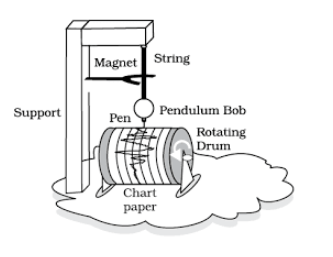
Seismograph work kaise karta hai?
Yeh ek simply vibrating rod ya pendulum ki tarah hota hai jo tremors occur hone par vibrate karna start kar deta hai. Metal rod pen se attached hoti hai jo paper par waves record karta hai. Inn waves ko study karke scientists earthquake ka map banate hai. Iski help se scientists earthquake ki deastruction power ka estimate bhi bata sakte hai.
Protection against Earthquakes
Earthquakes ko predict nahi kiya ja sakta leki hum kuchh necessary precautions le sakte hai jisse hum all the time protected reh sake. Especially jo log seismic zones mein rehte hai unko iske liye hamesha prepare rehna chahiye. Hamein seismic zones mein bani buildings ka structure iss tarah design karna chahiye yeh major tremors ko handle kar sake. Hamein buildings ke houses ko ‘Quake safe’ banane ke liye following steps lene chahiye.If you are at home
POINT 1
Electric charge: Electric Charge is nothing but the amount of energy or electrons that pass from one body to another by different modes like conduction, induction or other specific methods.
Charged objects: Objects in which there are unequal number of protons and electrons present are called charged objects.
Earthing: The process of transferring the immediate discharge of the electrical energy directly to the earth by the help of the low resistance wire is known as the electrical earthing.
Earthquake: An earthquake is a shaking of the ground caused by movement of the Earth's crust.
Richter scale: The Richter scale is a scale which is used for measuring how severe an earthquake is.
Seismograph: The meaning of seismograph is an apparatus to measure and record vibrations within the earth and of the ground.
Seismic zones: Thie boundaries of the earth's plate are the weak zones where earthquakes are more likely to occur. These weak zones are called as seismic or fault zones.
Electroscope: An electroscope is a scientific device that is used to detect the presence of an electric charge on a body.
SUMMARY
1. Some objects can be charged by rubbing with other objects.
2. There are two kinds of charges — positive charge and negative charge.
3. Like charges repel and unlike charges attract each other.
4. The electrical charges produced by rubbing are called static charges.
5. When charges move, they constitute an electric current.
6. An electroscope may be used to detect whether a body is charged or not.
7. The process of transfer of charge from a charged object to the earth is called earthing.
8. The process of electric discharge between clouds and the earth or between different clouds causes lightning.
9. Lightning strike could destroy life and property.
10. Lightning conductors can protect buildings from the effects of lightning.
11. An earthquake is a sudden shaking or trembling of the earth.
12. Earthquake is caused by a disturbance deep inside the earth’s crust.
13. It is not possible to predict the occurrence of an earthquake.
14. Earthquakes tend to occur at the boundaries of earth’s plates. These boundaries are known as fault zones.
15. Destructive energy of an earthquake is measured on the Richter scale. The earthquake measuring 7 or more on Richter scale can cause severe damage to life and property.
16. We should take necessary precautions to protect ourselves from earthquakes.